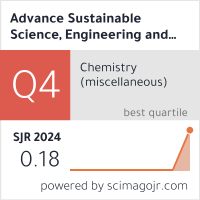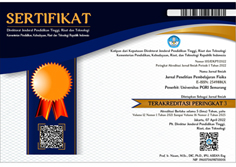Sustainable Strengthening of Concrete Using Lathe Waste Steel Fibers: Experimental and FEA Analysis
Sustainable Fiber Reinforced Concrete
DOI:
https://doi.org/10.26877/asset.v7i1.1068Keywords:
sustainable construction, fiber reinforced concrete, lathe waste steel fibers, finite element analysis, ANSYS 15 workbench, non destructive testing, computational analysis, scanning electron microscopyAbstract
The construction industry is growing fast and increasing the demand for concrete which requires sustainable materials. Concrete is weak in tension and needs fiber reinforcement to improve strength. This study explores lathe waste steel fibers as a sustainable option to enhance tensile properties. Local industries produce large amounts of lathe waste that can be used in fiber-reinforced concrete. Traditional destructive testing is expensive and slow because it needs heavy machinery like Universal Testing Machines. This research combines destructive and computational analysis using ANSYS 15 for finite element modeling. Cylindrical and beam specimens were tested with fiber ratios from 0 to 3 percent. Results show that 2.5 percent fiber content gives the best compressive and flexural strength. Scanning electron microscopy confirms stronger bonding as fibers break within the matrix instead of pulling out. This study proves lathe waste steel fibers improve both performance and sustainability in construction
References
[1] Ramos, H.M., Water Systems towards New Future Challenges. 2021: MDPI.
[2] Rehman, A., et al., Effective utilization of municipal solid waste as substitute for natural resources in cement industry. Civil Engineering Journal, 2020. 6(2): p. 238-257.
[3] Aldhshan, S.R., et al., Energy consumption and spatial assessment of renewable energy penetration and building energy efficiency in Malaysia: A review. Sustainability, 2021. 13(16): p. 9244.
[4] Ayodele, T., M. Alao, and A. Ogunjuyigbe, Recyclable resources from municipal solid waste: Assessment of its energy, economic and environmental benefits in Nigeria. Resources, Conservation and Recycling, 2018. 134: p. 165-173.
[5] Akhtar, M.Z., et al., How do industrial ecology, energy efficiency, and waste recycling technology (circular economy) fit into China’s plan to protect the environment? Up to speed. Recycling, 2022. 7(6): p. 83.
[6] Hooton, R.D., Future directions for design, specification, testing, and construction of durable concrete structures. Cement and Concrete Research, 2019. 124: p. 105827.
[7] Kot, P., et al., Recent advancements in non-destructive testing techniques for structural health monitoring. Applied Sciences, 2021. 11(6): p. 2750.
[8] Saeed, M. and H. Yas, Impact of concrete waste management by using life cycle assessment. Journal of Future Sustainability, 2023. 3(4): p. 267-276.
[9] Vieira, D.R., J.L. Calmon, and F.Z. Coelho, Life cycle assessment (LCA) applied to the manufacturing of common and ecological concrete: A review. Construction and Building Materials, 2016. 124: p. 656-666.
[10] Al-Mansour, A., et al., Green concrete: By-products utilization and advanced approaches. Sustainability, 2019. 11(19): p. 5145.
[11] Ali-Benyahia, K., et al., Analysis of the single and combined non-destructive test approaches for on-site concrete strength assessment: General statements based on a real case-study. Case Studies in Construction Materials, 2017. 6: p. 109-119.
[12] Rashid, K. and R. Waqas, Compressive strength evaluation by non-destructive techniques: An automated approach in construction industry. Journal of Building Engineering, 2017. 12: p. 147-154.
[13] Qurashi, M.A., et al., Sustainable design and engineering: A relationship analysis between digital destructive and non-destructive testing process for lightweight concrete. Processes, 2019. 7(11): p. 791.
[14] Vázquez-Rowe, I., et al., Production of cement in Peru: Understanding carbon-related environmental impacts and their policy implications. Resources, Conservation and Recycling, 2019. 142: p. 283-292.
[15] Gupta, R., et al., A review of sensing technologies for non-destructive evaluation of structural composite materials. Journal of Composites Science, 2021. 5(12): p. 319.
[16] Amran, M., et al., Fibre-reinforced foamed concretes: A review. Materials, 2020. 13(19): p. 4323.
[17] Ahmad, F., M.S. Nusari, and M.N. Inamdar. A leap towards environmental and economic friendly concrete having locally available lathe waste steel fibers as fiber reinforcement. in AIP Conference Proceedings. 2023. AIP Publishing.
[18] Hamrat, M., et al., Experimental and numerical investigation on the deflection behavior of pre-cracked and repaired reinforced concrete beams with fiber-reinforced polymer. Construction and Building Materials, 2020. 249: p. 118745.
[19] Ali, A.B., et al., Coupled effect of polypropylene fibers and slag on the impact resistance and mechanical properties of concrete. Materials, 2022. 15(16): p. 5654.
[20] Qureshi, Z.N., Y.M. Raina, and S.M.A. Rufaie, Strength characteristics analysis of concrete reinforced with lathe machine scrap. International Journal of engineering research and general science, 2016. 4(4): p. 210-217.
[21] Çelik, A.İ., et al., Performance assessment of fiber-reinforced concrete produced with waste lathe fibers. Sustainability, 2022. 14(19): p. 11817.
[22] Dudziak, S., Numerically efficient three-dimensional model for non-linear finite element analysis of reinforced concrete structures. Materials, 2021. 14(7): p. 1578.
[23] Aabid, A., et al., Optimization of structural damage repair with single and double-sided composite patches through the finite element analysis and Taguchi method. Materials, 2023. 16(4): p. 1581.
[24] Kamarudin, M.N.B., et al., Buckling analysis of a thin-walled structure using finite element method and design of experiments. Aerospace, 2022. 9(10): p. 541.
[25] Shaikh, A.A., et al., Effect of fiber orientation-based composite lamina on mitigation of stress intensity factor for a repaired plate: a finite element study: Repair of thin-walled structures. Frattura ed Integrità Strutturale, 2024. 18(68): p. 209-221.
[26] Singh, M., et al., Experimental and numerical study of the flexural behaviour of ultra-high performance fibre reinforced concrete beams. Construction and Building Materials, 2017. 138: p. 12-25.
[27] Jongvivatsakul, P., et al., Using steel fiber-reinforced concrete precast panels for strengthening in shear of beams: an experimental and analytical investigation. Advances in Civil Engineering, 2019. 2019.
[28] Kalaivani, M., G. Vennila, and R. Subhasree, Feasibility study on behavior of steel fiber reinforced concrete elements using Ansys. International Journal for Research & Development in Technology, 2017. 7(2): p. 143-150.
[29] Islam, A., et al., A comparative study on the properties of natural, synthetic and steel fibre reinforced concrete. Journal of Civil Engineering and Construction, 2021. 10(4): p. 216-224.
[30] ASTM, A., C39/C39M-21. Standard test method for compressive strength of cylindrical concrete specimens, 2021.
[31] AL-Khafaji, A.G.A., A.H.N. Al-Mamoori, and A.M. Abd Aoun. Improvement of flexural strength of precast concrete spliced girder using reactive powder concrete in splice region. in Structures. 2018. Elsevier.
[32] Nikolenko, S., et al. Flexural strength of fiber reinforced concrete structures. in Journal of Physics: Conference Series. 2021. IOP Publishing.
[33] Li, Y., E.-H. Yang, and K.H. Tan, Flexural behavior of ultra-high performance hybrid fiber reinforced concrete at the ambient and elevated temperature. Construction and Building Materials, 2020. 250: p. 118487.
[34] Maanvit, P.S., et al., Experimental examination of fiber reinforced concrete incorporation with lathe steel scrap. IJITEE, 2019. 9(2): p. 3729-3732.
[35] Ahmad, J., et al., Glass fibers reinforced concrete: Overview on mechanical, durability and microstructure analysis. Materials, 2022. 15(15): p. 5111.
[36] Li, B., et al., Experimental investigation on the flexural behavior of steel-polypropylene hybrid fiber reinforced concrete. Construction and Building Materials, 2018. 191: p. 80-94.
[37] Teja Prathipati, S., C. Rao, and N. Dakshina Murthy, Mechanical behavior of hybrid fiber reinforced high strength concrete with graded fibers. International Journal of Engineering, 2020. 33(8): p. 1465-1471.
[38] Kim, N.-H., B.V. Sankar, and A.V. Kumar, Introduction to finite element analysis and design. 2018: John Wiley & Sons.
[39] Lee, H.-H., Finite element simulations with ANSYS Workbench 18. 2018: SDC publications.
[40] Hamad, A.J., Size and shape effect of specimen on the compressive strength of HPLWFC reinforced with glass fibres. Journal of King Saud University-Engineering Sciences, 2017. 29(4): p. 373-380.
[41] Fládr, J. and P. Bílý, Specimen size effect on compressive and flexural strength of high-strength fibre-reinforced concrete containing coarse aggregate. Composites Part B: Engineering, 2018. 138: p. 77-86.
[42] ASTM, A., C293/C293M-16: Standard Test Method for Flexural Strength of Concrete (Using Simple Beam with Center-Point Loading),(2008).
[43] D’Altri, A.M., et al., Modeling strategies for the computational analysis of unreinforced masonry structures: review and classification. Archives of computational methods in engineering, 2020. 27: p. 1153-1185.
[44] Halahla, A. Study the behavior of reinforced concrete beam using finite element analysis. in Proceedings of the 3rd World Congress on Civil, Structural, and Environmental Engineering (April 2018). doi. 2018.
[45] Kim, Y.J. and A. Hassani, Stepped Reinforced Concrete Beams Retrofitted with Carbon Fiber-Reinforced Polymer Sheets and Ultra-High-Performance Concrete. ACI Structural Journal, 2023. 120(2): p. 91-104.
[46] Walters, D.J., D.J. Luscher, and J.D. Yeager, Considering computational speed vs. accuracy: Choosing appropriate mesoscale RVE boundary conditions. Computer Methods in Applied Mechanics and Engineering, 2021. 374: p. 113572.
[47] Magomedov, I. and Z. Sebaeva. Comparative study of finite element analysis software packages. in Journal of Physics: Conference Series. 2020. IOP Publishing.
[48] Ozdemir, H. and K. Bilisik, Experimental Study on Angular Flexural Performance of Multiaxis Three Dimensional (3D) Polymeric Carbon Fiber/Cementitious Concretes. Polymers, 2021. 13(18): p. 3073.
[49] Wei, J., et al., Ultra-High-Performance Concrete Reinforced with Multi-Scale Hybrid Fibers and Its Durability-Related Properties. 2023.
[50] Ahmad, H., et al., Finite element analysis of glass fiber-reinforced polymer-(Gfrp) reinforced continuous concrete beams. Polymers, 2021. 13(24): p. 4468.
[51] Prakash, R., et al., Effect of steel fiber on the strength and flexural characteristics of coconut shell concrete partially blended with fly ash. Materials, 2022. 15(12): p. 4272.
[52] Chimakurthi, S.K., et al., ANSYS Workbench System Coupling: a state-of-the-art computational framework for analyzing multiphysics problems. engineering with Computers, 2018. 34: p. 385-411.
[53] Djerrad, A., et al., Experimental and FEM analysis of AFRP strengthened short and long steel tube under axial compression. Thin-Walled Structures, 2019. 139: p. 9-23.
[54] Nassani, D.E. Experimental and analytical study of the mechanical and flexural behavior of hybrid fiber concretes. in Structures. 2020. Elsevier.
[55] Małek, M., et al., Effect of metal lathe waste addition on the mechanical and thermal properties of concrete. Materials, 2021. 14(11): p. 2760.
[56] Alabi, S.A. and J. Mahachi, Predictive Models for Evaluation of Compressive and Split Tensile Strengths of Recycled Aggregate Concrete Containing Lathe Waste Steel Fiber. Jordan Journal of Civil Engineering, 2020. 14(4).
[57] He, F., L. Biolzi, and V. Carvelli, Effect of fiber hybridization on mechanical properties of concrete. Materials and Structures, 2022. 55(7): p. 195.
[58] Ivanchev, I., Investigation with non-destructive and destructive methods for assessment of concrete compressive strength. Applied Sciences, 2022. 12(23): p. 12172.











